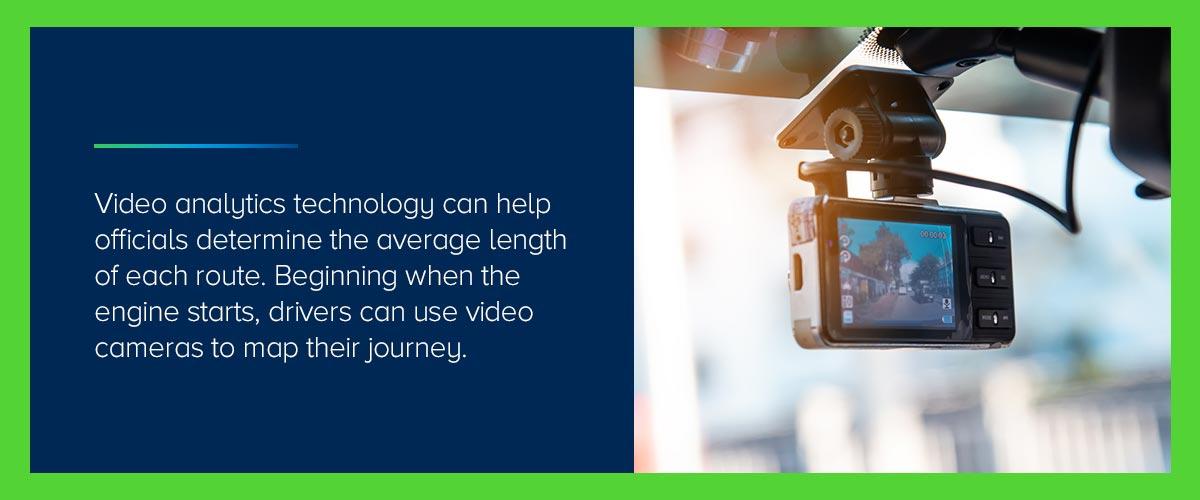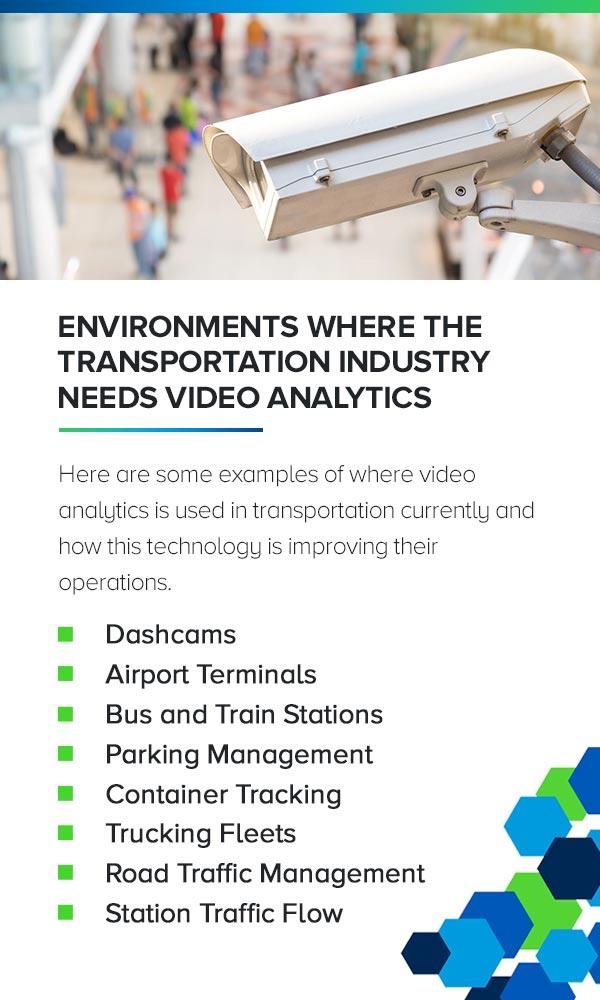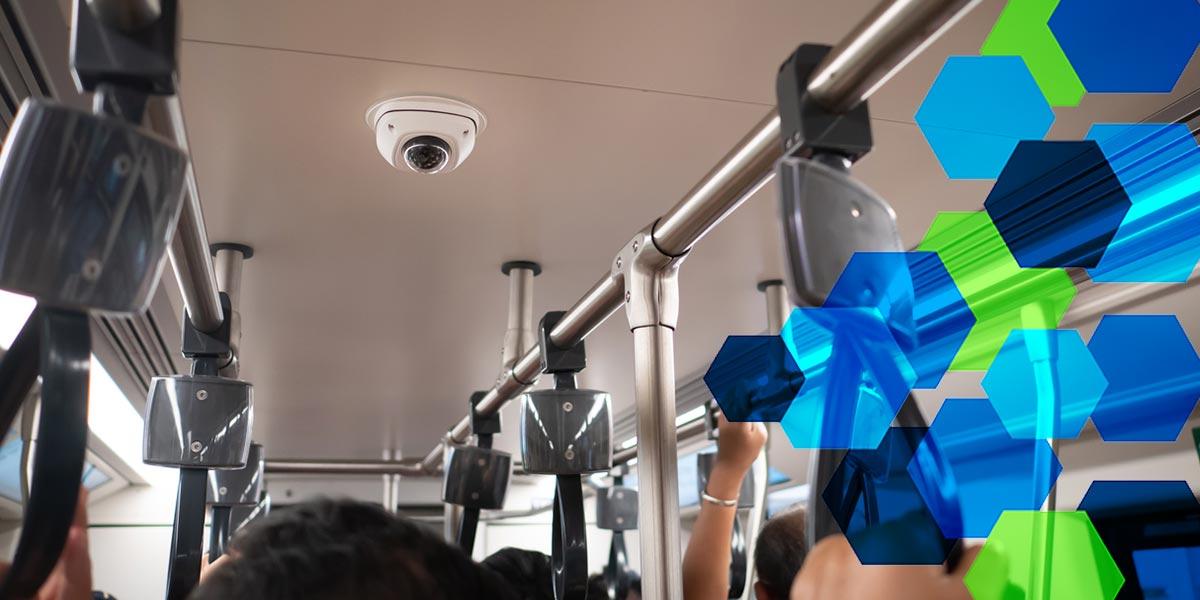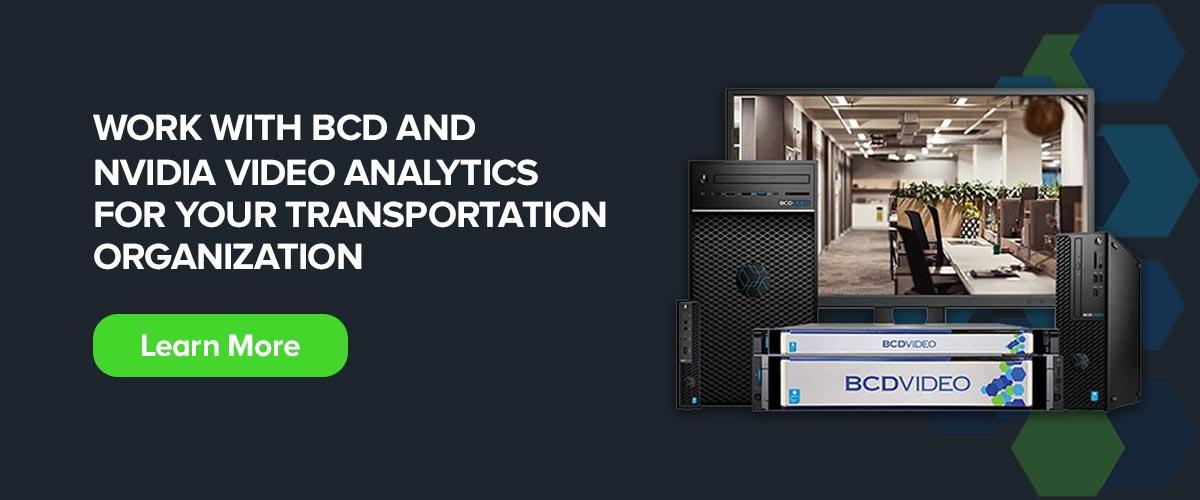From carrying goods across the country to bringing commuters to their jobs, the transportation industry is critical to maintaining a functioning society. Data-driven technology enables public and private transportation providers to analyze operations and continuously improve to provide effective services for all those who use it.
Video analytics is a technology that uses specialized algorithms to analyze video footage and generate descriptions of video metadata. These functions enable security professionals and transportation managers to identify and monitor important elements within the field of view (FoV) so they can determine the appropriate actions to take.
The increasing implementation of video analytics in the transportation industry is a promising method for improving public and private transit moving forward. Read on to learn more about this technology and how it can serve transportation companies.
How the Transportation Industry Utilizes Video Analytics
Video is one of the richest sources of data available. Combined with the Internet of Things (IoT) sensors and other hardware, video data provides powerful insights for increasing safety and improving the customer experience. Here are some examples of common transportation industry uses for video analytics.
Eliminating Overcrowding
During peak hours, public transport can easily become overcrowded, negatively impacting passenger comfort and safety. Over time, constant overcrowding can also lead to reduced vehicle performance, which can drive up repair and maintenance costs for public transport providers.
Cameras equipped with IoT motion sensors on vehicle doors can help track the number of people boarding at a time. When the vehicle is nearing its maximum capacity, it can alert the driver, who can then manage the situation accordingly.
Station managers could also combine their video analytics system with a real-time station display or a passenger app to improve the passenger experience. By informing passengers that the vehicle has reached capacity, passengers can change their plans accordingly.

Improving Time Management
Video analytics technology can help officials determine the average length of each route. Beginning when the engine starts, drivers can use video cameras to map their journey.
This information helps drivers and system administrators understand when, where and why delays typically happen. Officials can then adjust routes and schedules as needed to reduce or even eliminate delays in the future.
Additionally, using historical data gathered from previous journeys, the analytics system can predict peak traffic hours, enabling drivers to reroute as needed to keep their journey moving according to schedule.
Creating a Safer Environment
One of the top benefits from leveraging video analytics on transportation is the technology’s ability to improve passenger safety. Basic video security technology is useful for recording incidents both inside and outside vehicles, but it’s a largely reactive way to respond to incidents.
Most transportation providers already have counter-terrorism measures in place to prevent and respond to severe threats, but transportation managers more often deal with everyday concerns, such as:
- Overcrowding
- Traffic bottlenecks
- Theft
- Vandalism
- Trespassing
- Passenger behavior
Data-driven technologies like video analytics enable transportation companies to take a proactive and preventative approach to safety and security without disrupting passengers’ personal privacy or the flow of travel.
Developments in software capabilities are driving these changes. For example, the U.S. Department of Homeland Security’s (DHS) evolving Forensic Video Exploitation and Analysis (FOVEA) technology enables users to quickly analyze the situation surrounding an unattended package or bag. Human users can select the concerning item and review the related footage to identify the person who left it and follow them through the station to determine whether a threat is present.
Accelerating Security Investigations
Video security technology has become critical to the transportation industry. However, with conventional closed circuit television (CCTV) technology, authorities must review and analyze tens of hours of footage after an incident occurs, which can significantly delay their investigations.
Video analytics software accelerates video data aggregation and automatically filters through hours of footage to identify key insights that are relevant to the case, on the same day as the incident, drastically improving investigative response times.

Environments Where the Transportation Industry Needs Video Analytics
The positive impacts of video analytics on transportation are many. Here are some examples of where video analytics is used in transportation currently and how this technology is improving their operations.
Dashcams
Dashcam systems are excellent technologies for improving vehicle safety and enabling continuous improvement in transportation systems. Some benefits of adding video analytics capabilities to dashcams include:
- Prevent accidents: Analytics-equipped dashcams can detect people or objects in the road and alert drivers, helping them to avoid collisions.
- Streamline insurance claims: When accidents happen, insurance rates can double or even triple. A dashcam with video analytics and incident reporting capabilities can help drivers and companies prove they weren’t at fault, making it easier to keep insurance rates low.
- Passenger safety: Monitoring passenger behavior during journeys is just as important as tracking driver behavior. Video analytics-equipped cameras combined with motion-sensing devices throughout the vehicle can capture risky behavior from passengers and alert the driver to the situation.
Airport Terminals
Operational efficiency and security are typically the top concerns in airports. According to the International Air Transport Association (IATA), aviation security risks come in many different forms and can change rapidly.
Crowd control and effective monitoring are important for securing airports and providing excellent passenger service. Video analytics is a useful solution because it provides real-time visibility into situations as they arise. Some of the primary benefits of implementing video analytics in airport terminals can include:
- Improving security: Video analytics provide security teams with real-time situational awareness, improving their ability to quickly determine the best course of action and respond accordingly to the situation. Additionally, by documenting data from previous incidents, security teams can analyze residual risk and prevent similar situations from arising in the future.
- Reducing queues: Video analytics can track the number of passengers moving through an area, which can help airport managers determine how best to streamline bottleneck-prone areas such as security checks and terminal gates.
- Developing business: Knowing how passengers tend to navigate terminals can help inform tenancy sales and pricing for retail vendors and restaurants within the terminal. This data is also useful for vendors, as knowing peak hours can help them maximize their business.
- Optimizing airport maintenance: Tracking occupancy through video analytics helps identify peak hours for specific areas within a terminal. This information allows airport staff to schedule maintenance and cleaning based on known traffic trends.
Incorporating video analytics makes it easier for airlines and airports to create a smooth experience for both passengers and operation managers.
Bus and Train Stations
Safety is an increasing concern both in transport hubs and onboard buses and trains. To address these growing concerns, city officials are increasingly implementing video security technologies throughout transport systems.
In 2022, New York Governor Kathy Hochul announced that the city would equip all of its subway trains with two cameras in each car to deter crime and rebuild the public’s trust in the system’s safety. This move can significantly increase authorities reach within the Metro and improve passengers’ sense of security.
Adding video analytics to these cameras further enables law enforcement officials to protect citizens by:
- Improving efficiency for travelers.
- Creating a holistic view of a situation.
- Tracking and analyzing security trends over time.
Implementing video analytics systems helps officials monitor crowd traffic at the stations, which provides important information to decrease the length of wait times for public transit.
Parking Management
Parking facility usage has varied recently as a result of evolving public health restrictions. Many parking facilities are now looking to move away from analog systems toward digital alternatives.
Video analytics technologies can help parking facilities create a streamlined parking experience by:
- Automated billing: Video analytics software can recognize specific license plate numbers and determine the length of each customer’s stay. Cameras can send that data to the integrated online payment system to automatically bill customers.
- Hazard detection: Cameras combined with IoT sensors throughout the structure can detect environmental hazards such as ice, smoke and fire. Software integrations enable systems to respond by triggering automatic alerts to local emergency responders. This kind of system empowers fast issue resolution and minimizes facility damage.
- Traffic flow: Cameras equipped with video analytics can analyze parking queues at peak hours to identify patterns and trends. Additionally, this software can recognize when specific areas are empty or full, allowing easier navigation for customers.
Container Tracking
Losing important cargo can cause devastating losses for logistics and shipping providers. Cloud-based video analytics software equipped with container tracking capabilities can improve protection for goods by making sure cargo is always where it should be.
Many advanced analytics technologies can count the number of objects moving through an area at any given moment. Here are some examples of video analytics use cases for container tracking:
- Isolating specific objects: Video analytics software can filter out extraneous background elements and focus on specific containers. This capability can help track container movement and uncover where missing cargo may have gone.
- ISO code recognition: Advanced analytics programs can recognize container ISO codes. Operators can prevent container misplacement by setting which codes they want to watch for. They can then receive automated notifications if containers move into the wrong area.
- Object counting: Video analytics software can monitor the number of people or containers entering and exiting specific areas to gain insight into typical port traffic.
Trucking Fleets
Video analytics software is beneficial for truck drivers and fleet owners. Installing an analytics-equipped dashcam in a truck can help companies improve their bottom line and keep their drivers safe and help identify the most optimal route planning.
For one thing, video analytics can help truck companies identify the causes of accidents, helping to reduce false insurance claims and save companies money.
Blind spot detection is another major benefit. Integrating high-resolution cameras with a VMS system and blind spot detection system creates a network that picks up motion or activity the driver cannot see, which can prevent accidents.
Further, video analytics can help trucking companies improve driver training by analyzing incidents to identify common trends. The training can then address these trends to prevent similar accidents from happening in the future.
Road Traffic Management
Automated video analytics software can provide insights into traffic flow on roads by detecting, counting and classifying vehicles as they enter the FoV. By training the analytics algorithm to watch for abnormal driver behavior and improve pedestrian safety, officials can detect and respond to road incidents in real time.
Video analytics can also monitor intersections to collect data on accidents. This data can help teams develop proactive solutions to prevent crashes rather than responding to crashes only after they occur. For example, if many near misses happen because pedestrians are crossing the road when they shouldn’t be, the authorities can take steps to ensure roads are safer for all users.
Implementing this technology would require traffic staff to become familiar with using the technology rather than closely monitoring traffic themselves.
Station Traffic Flow
Managing traffic flow within transit hubs can help prevent overcrowding and other safety concerns. Improving traffic flow helps passengers get to their destinations on time, delivering a good experience.
By tracking across cameras within the system, officials can monitor and quickly respond to changes in passenger and traffic flow throughout the building. They can also use video analytics systems to create intelligent visualizations of traffic data, such as heatmaps and charts, which they can access through user-friendly dashboards.
These visualizations provide officials with helpful information they can use to improve traffic flow, such as:
- Peak hours for passenger traffic.
- Bottleneck-prone areas within the station.
- Which routes are most and least popular.
- Improve traffic flow for emergency vehicles.
With this information, managers can adjust staffing and route schedules to match demand and create increased business value.
BCD and NVIDIA Solutions
BCD has partnered with NVIDIA, a pioneer in AI and accelerated computing, to enable GPU-powered video analytics solutions.
NVIDIA Metropolis makes it easier and more cost-effective for enterprises, governments, and integration partners to leverage world-class AI-enabled solutions to improve critical operational efficiency and safety problems.
BCD’s testing and validation process ensures solutions from various independent software vendors (ISVs) work with our systems. Whether it takes one day or one month, we thoroughly vet each application using the following tests:
- Benchmarks: We test each application in normal function to provide a standard we can test against in other trials.
- Test to fail: We introduce a high-stress condition to test how far the application can function before total failure. This helps us determine the total capacity of the application.
- Compatibility: Using the NVIDIA framework, we make sure all video analytics software works seamlessly with BCD appliances.


